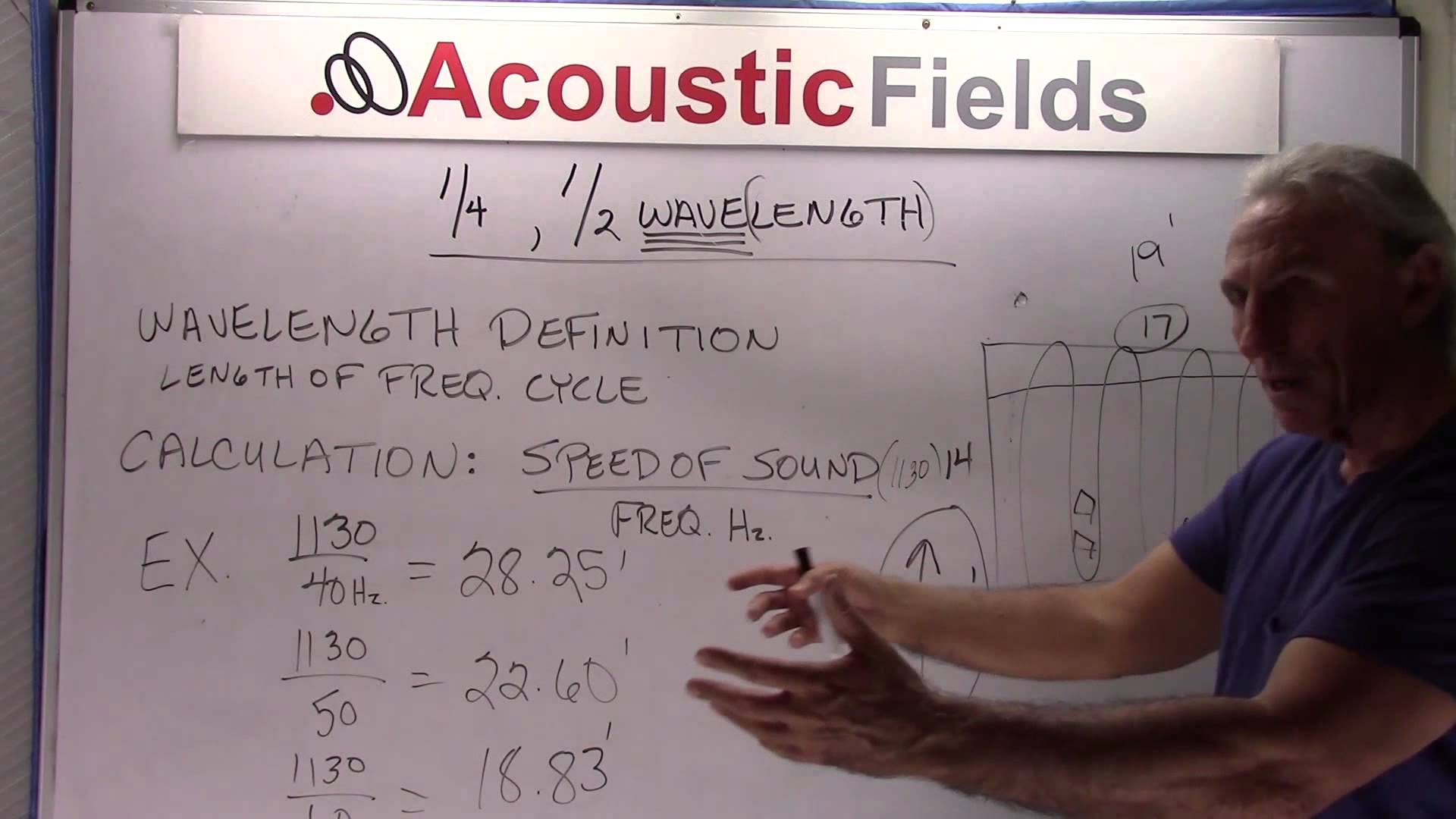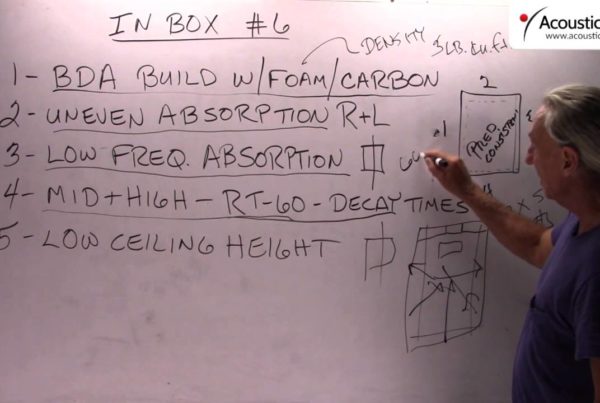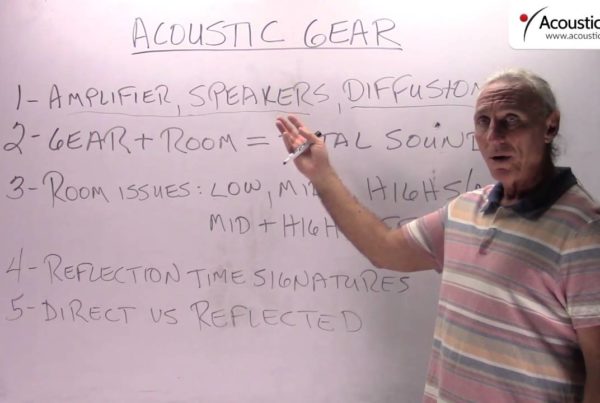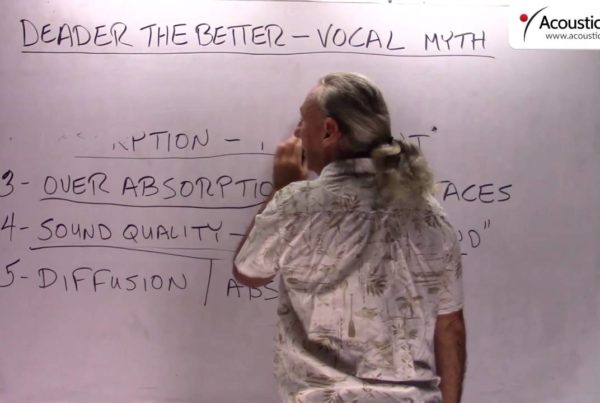Today we are going to talk about 1/4 and 1/2 wavelengths.
We’re going to use these two number to give people a feel for exactly what we’re dealing with in room acoustics. How unwanted room low pressures come into play, and I think if we run through a simple calculation here, you’ll be able to get an idea. Notice that I’ve underlined the word “wave” here. Because it is a wave, it’s a length of a frequency cycle. You want to know the length of that wave, the word really can tell you a lot about what you’re doing. The quarter and the half of wave we’ll get into later. There’s some theories on that, they’re just theories, by the way, we’ll talk about those at a later point. For purposes of this discussion, let’s just work a little math, to get a feel for what we’re up again. So it’s going to be a calculation and we’re going to use the speed of sound, for constant and general purposes we’re just going to use a lot of 30’’ per second.
We’re going to divide it by the frequency in question. So in this example, here we’re going to take a 40 cycle, 40 hertz wave, divided into the 1130, which is the constant. We’re going to get a little over 28’’. How is that 28’’ wave going to fit into your 17’’ room? How is that 28’’ wave going to fit in a 14’’ width? And more importantly in North America, how is that 28’’ long wave going to fit between your floor and ceiling? So you have to get a feel for the reasons behind all these issues within small room acoustics.
A 50 cycle wave is the same process, 1130 feet per second, we get about 22,5’’. Same question: how is 22,5’’ going to fit in your 17’’ long room, 14’’ wide room and 8’’ tall room? It’s not, t’s going to cause issues. Those issues are going to be spread throughout the room, depending on room size and volume. If your speakers are in one pressure area and your seat is another non-pressure area, you have problems. You won’t even hear certain frequencies. 60 cycle wave about 18’’ or 19’’, same question again.
Well is this example, we have 17, so we’re looking a little bit better if we have a 19’’ long 60 cycle wave. But you understand the situation here, you got a lot of length, and you’re trying to squeeze it into a little box. A lot of you have rooms that are too small. Your pressure levels, and the mode of pressure levels of the room are so many and so great, that the amount of treatment you would have to put in, would make a room so small, it would be unworkable. And I have the most powerful low frequency technology in the world. If I can’t manage your lower end for you, nobody can. So when I tell you to find another room, this is a big reason why. Because the amount of low frequency absorption that you would have to add to the room would make it so small. In most cases, most rooms require a room at least 12 inches all the way around to treat most frequencies. That’s using the most powerful technology in the world. So you have to be cognizant of what you’re trying to do. Don’t try to squeeze a lot of energy into a small room, you have to be very, very careful.
So this quarter wave, half wave length of course if we were using a quarter and half, we would just cut our distances. So half here would be 14, half here would be 11, and half here would be almost 10, or almost 9,5. And we’ll get into the discussion of half and quarter wavelength later, but I wanted you to see how we calculate length, and apply it to your room, so you can get an idea. So when you’re looking at a room and you’re like a lot of low end, and you’ve got little distances, you’re going to have big problems.
—
This is an unedited transcript from our video series from Acoustic Fields. There will be some errors in grammar and sentence structure that occur during this translation process.
For complete understanding and comprehension, please view the video which is included in this text. For any additional information regarding this topic or others relating to room acoustics, please contact us directly at:
P: 520 – 392 – 9486







